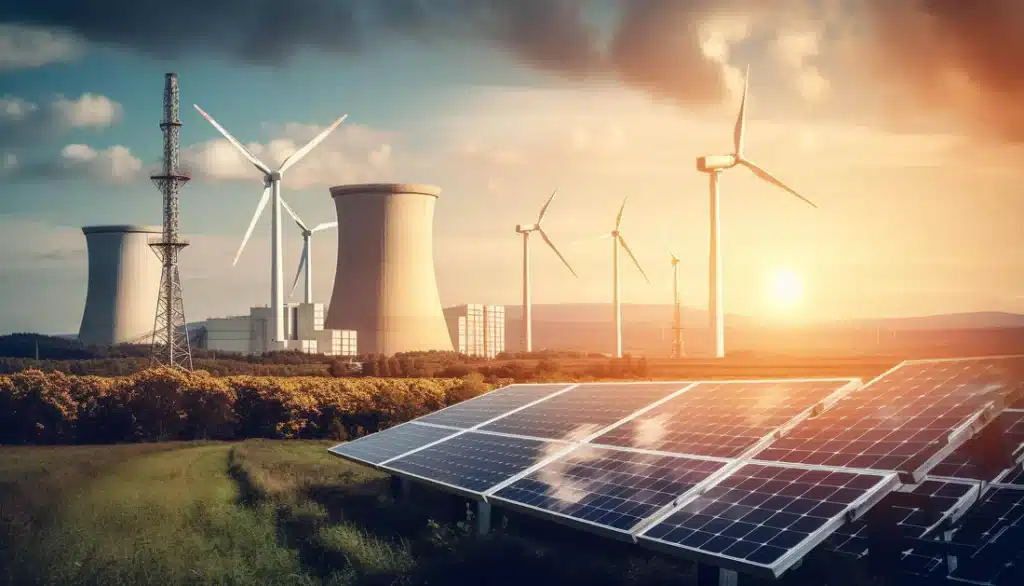The shift to renewable energy in the U.S. is reshaping finance, with new options supporting the green transition. Government programs, green bonds, and sustainability-linked loans are driving growth in clean energy.
Green bonds fund eco-friendly projects, while sustainability loans encourage corporations to meet ESG goals. These financial tools benefit both large and small businesses, supporting the move toward a sustainable future.
Federal and state incentives

Government incentives play a key role in promoting clean energy projects. The federal government offers policies like tax rebates and investment tax credits, reducing the initial capital required for renewable infrastructure.
These incentives make investments attractive for corporations and individuals. Additionally, state-specific programs provide further benefits, such as reduced property taxes and expedited permitting for green projects.
States like California lead with ambitious renewable portfolio standards and generous subsidies for solar installations, while Texas, traditionally an oil powerhouse, is diversifying its energy mix with supportive state policies for wind and solar energy development. These initiatives not only drive the renewable industry but also set benchmarks for other states.
As these incentives evolve, they remain vital in the renewable energy landscape, reducing financial burdens and risks. The alignment of federal and state policies is creating a cohesive framework to support the widespread adoption of sustainable technologies, ensuring a strong foundation for the future of clean energy.
Innovations in private financing
The private sector is playing a crucial role in renewable financing innovations. Companies are engaging in power purchase agreements (PPAs), long-term contracts to buy renewable electricity at fixed prices. These agreements provide stability for energy producers and predictable costs for buyers, while also allowing them to claim renewable energy credits.
Venture capital and private equity firms are investing heavily in clean energy startups, supporting technological advancements and innovation. This influx of private capital diversifies financing options for renewable projects.
Crowdfunding platforms are democratizing investment opportunities, allowing everyday investors to participate in clean energy projects. This broadens the pool of available capital and raises awareness about sustainability issues.
Impact of renewable energy on traditional financing
The rise of clean energy is transforming traditional financing models. As renewable projects become more economically viable due to technological advances and lower costs, traditional lenders are reassessing how they evaluate and fund energy infrastructures.
Banks are developing new risk assessment frameworks that account for the unique characteristics of renewable energy, leading to better loan terms and increased credit availability for clean energy projects. Insurance companies are offering products tailored to renewable assets, mitigating risks related to resource availability and technology.
These solutions provide added security for investors, further stabilizing the market. Traditional financial institutions are increasingly recognizing renewables as reliable investments, supporting global decarbonization efforts.
Incorporating environmental factors into financial decisions is becoming a defining feature of the evolving landscape. As renewables become mainstream, even conservative financiers are recognizing the importance of ESG criteria, broadening their understanding of market dynamics and identifying growth areas.
The role of technological advancements
Technological advancements are shaping how traditional financing adapts to renewable energy. Blockchain technology enhances transparency and traceability in energy trading markets, while smart contracts automate transactions, reduce costs, and improve market efficiency. These technologies attract more stakeholders to the renewable sector.
Artificial intelligence and big data are transforming the evaluation and management of renewable energy projects. These tools allow for more accurate forecasting, better risk management, and optimization of asset performance, reducing perceived risks and attracting more traditional financing options to the sector.
Improvements in battery storage and grid technology are making renewable energy more reliable, a key factor for financiers. The ability to store and dispatch electricity according to demand reduces volatility, making renewable energy investments more appealing.
The future outlook for renewable financing
The future of renewable energy financing in the U.S. looks promising as financial models and instruments continue to evolve. With advancements in technology and policy frameworks, renewable financing will become even more accessible and feasible.
Emerging trends like green fintech will revolutionize the landscape by integrating clean energy finance with digital technologies, improving efficiency, and broadening access. Green fintech platforms will streamline processes, lower transaction costs, and minimize barriers for smaller participants, democratizing renewable investment.
This will encourage the widespread adoption of clean energy solutions, making them integral to daily life. As financial products continue to innovate, scalability and adaptability will be key in meeting market demands.
Ultimately, the transition to sustainable energy will reshape financing practices across various sectors, building a resilient, sustainable economy. The financial sector will play a crucial role in helping the U.S. meet its renewable energy targets and lead the global charge toward a greener future.

